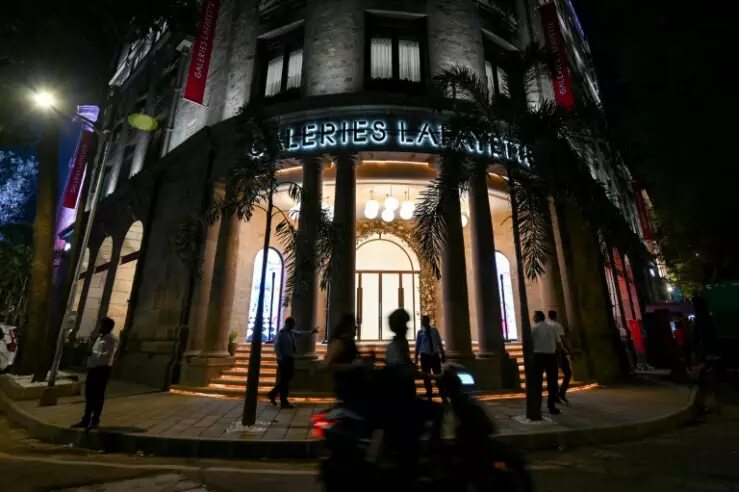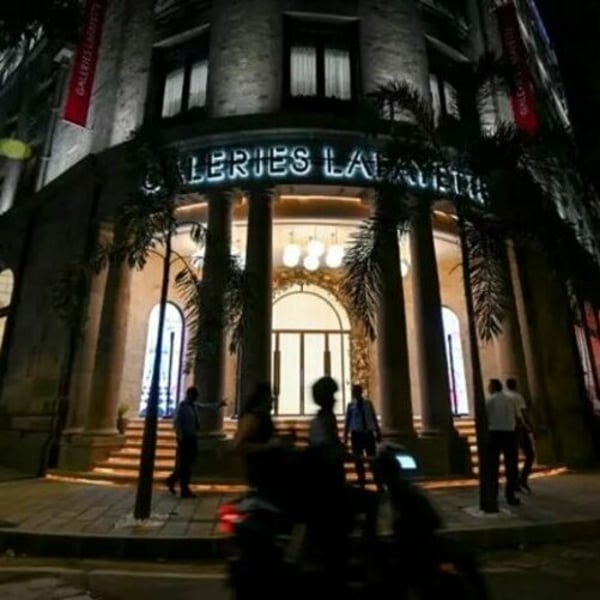By
AFP
Published
November 16, 2025
Is India the new El Dorado for French luxury brands? For two decades, the most prestigious brands have dreamed of India, but the world’s most populous country is still a long way from meeting their expectations.
 Pedestrians walk past the Galeries Lafayette store in Bombay on 15 October 2025. – Punit Paranjpe / AFP/Archives
Pedestrians walk past the Galeries Lafayette store in Bombay on 15 October 2025. – Punit Paranjpe / AFP/Archives
“It’s a promising market, but a complicated one,” said Bénédicte Epinay, general delegate of the Comité Colbert, which represents the sector and brings together 85 French companies.
The opening on Sunday of Galeries Lafayette’s first Indian store in the western megacity of Bombay is “an important step that will bring a breath of the West,” she said.
Of the 280 luxury and designer brands spread over 9,000 m² and five floors, the majority are foreign.
This balance is likely to shift, said Philippe Pedone, director of international development at Galeries Lafayette, at the inauguration of the store, developed in partnership with India’s Aditya Birla Group.
Nicolas Houzé, chairman of the group’s management board, added that the historic chain aims to open “a second department store in New Delhi” by 2029-2030, with an initial target of “annual sales of 20 million euros”.
With its 1.4 billion inhabitants, the potential of the Indian market is immense.
Every year, tens of thousands of new millionaires flaunt their success behind the wheel of a Lamborghini or with a Rolex on their wrist.
The growth is dizzying: according to Estelle David, Director for South Asia at Business France, the luxury market, valued at 10 billion euros in 2024, is set to triple by 2030.
“When a luxury house is interested in a new country, it looks at the number of wealthy people and the rise of a middle class. India ticks all the boxes,” explained the general delegate of the Comité Colbert.
But the reality is more complex. High taxes, regulatory constraints, limited quality infrastructure and a strong cultural identity make for daunting obstacles.
‘Infinitesimal’
Contacted by AFP, the French luxury giants declined to comment. According to experts, this silence reflects the “very few positive things” they have to say about this “complicated” market.
“They have very little data to show that they are making a profit” and “achieving a return on investment,” pointed out Ashok Som, professor at ESSEC.
In the early 2000s, the major houses considered India their next growth driver after China. But a quarter of a century on, the market remains “infinitesimal,” explains Epinay: most brands have between one and three stores there, compared with 100 to 400 in China.
In her view, the only thing these two powers have in common is “the number of inhabitants”. India lacks the same “social, linguistic and territorial homogeneity”, she pointed out.
“Most still don’t understand this market,” that of a “poor country with a largely agrarian economy,” added Som. China, by contrast, had “shopping malls everywhere” by the end of the 1990s, he notes, and a “wealthy class eager for Western products.”
Today, the world’s fifth-largest economy has just six high-end shopping malls.
‘We have to adapt’
Further major obstacles include high customs duties, non-tariff barriers and heavy bureaucracy.
As a result, it often makes sense for an Indian consumer to make a return trip to Dubai, costing around 300 euros, to buy a bag from a French luxury brand for 30% to 40% less than in Bombay or New Delhi.
A glimmer of hope: India and the European Union (EU) have pledged to conclude by the end of the year a free-trade agreement that has been under negotiation for years. “This will give this market a real boost,” said Epinay.
But to appeal to Indian consumers, “you have to adapt to the culture, tastes and consumption patterns,” stressed Ms David.
Although the major foreign ready-to-wear brands have stores in megacities such as New Delhi, Bombay and Bangalore, “Western silhouettes” remain in the minority across the country.
While men have largely abandoned their “kurtas” (long, loose-fitting shirts), women continue to wear “saris”, rectangles of shimmering fabric. To win them over, brands such as Louboutin, Dior, Chanel and Bulgari are already collaborating with designers, brands, Bollywood stars and local influencers, according to market insiders.
But “why would you want to buy something from abroad that’s trying to be Indian?” asked Sonal Ahuja, a 39-year-old human resources manager met in a Bombay shopping mall.
French brands are also banking on e-commerce and India’s 900 million internet users.
With over 35 million people, the diaspora could also help convert Indian customers. Many of those who return to the country bring Western lifestyles back with them.
This article is an automatic translation.
Click here to read the original article.
Copyright © 2025 AFP. All rights reserved. All information displayed in this section (dispatches, photographs, logos) are protected by intellectual property rights owned by Agence France-Presse. As a consequence you may not copy, reproduce, modify, transmit, publish, display or in any way commercially exploit any of the contents of this section without the prior written consent of Agence France-Presses.
